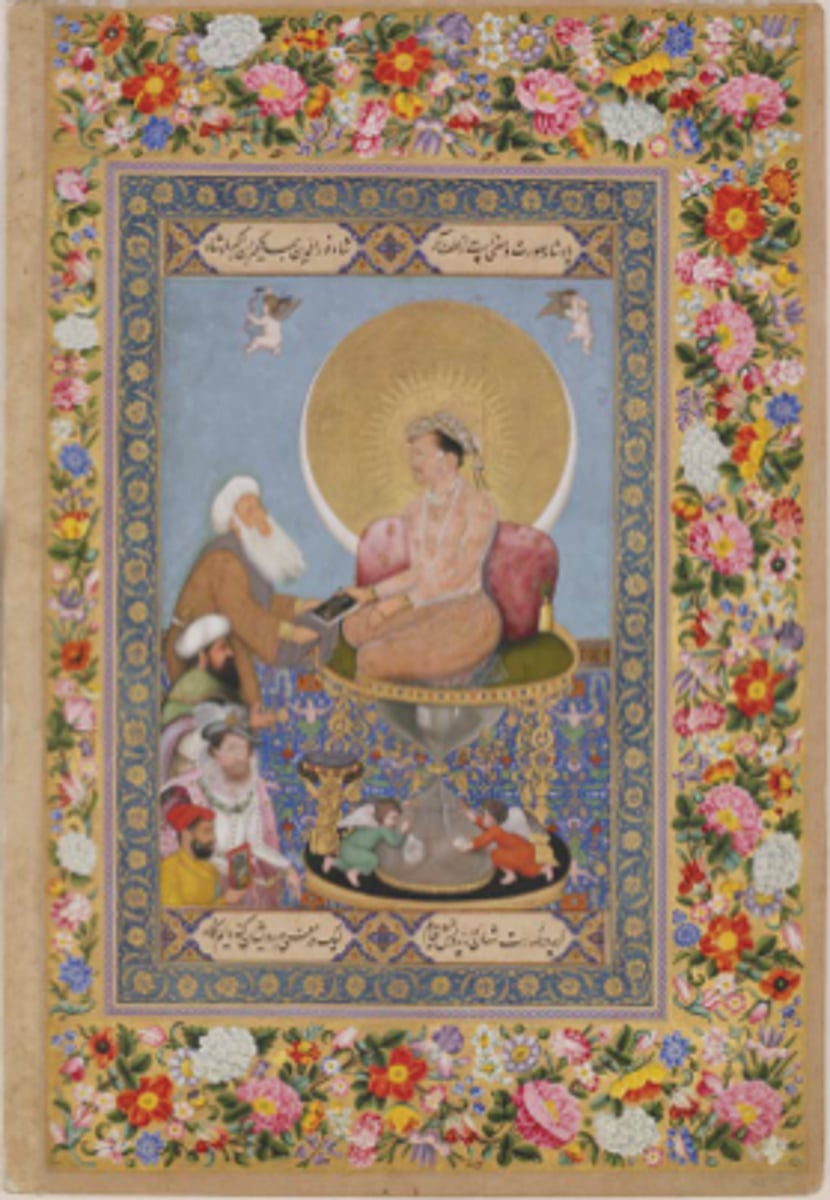Indian and Southeast Asian Art
1/10
There's no tags or description
Looks like no tags are added yet.
Name | Mastery | Learn | Test | Matching | Spaced |
|---|
No study sessions yet.
11 Terms
- Bamiyan at western ed of silk route; trading and religious center
- two huge standing Buddhas, one 175 feet tall, other 115 feet tall
- first colossal Buddhas
- niche shaped like a halo (mondria) around the body
- smaller Buddha: Sakyamuni, the historical Buddha
- larger Buddha: Vairocana, the universal Buddha
- originally covered w/ pigment and gold
- cave galleries wave through cliff face; some painted w/ wall paintings and images of seated Buddha
- pilgrims can walk through cave galleries into passageways that lead to level of Buddha's shoulders
- models for later large-scale rock-cut images in China
- destroyed by Taliban in act of iconoclasm in March 2002
Buddha

- enshrined in Jokhang Temple; Tibet's earliest and foremost Buddhist temple
- temple founded in 647 CE by first ruler of a unified Tibet
- Jowo = "lord"; khang = "house"
- statue thought to have been blessed by Buddha himself; believed to have been crafted in India during his lifetime
- depiction of Buddha Shakyamuni as young man, around age of 12
- disappeared in 1960s during Chinese Cultural Revolution
- 1983: lower part found in rubbish heap; upper part in Beijing; restored in 2003
Jowo Rinpoche from the Jokhang Temple

- Buddhist shrine, mound shaped, faced w/ dressed stone
- three umbrellas at top, representing Buddha, Buddha's Law, and Monastic Orders
- railing at crest of mound surrounds umbrellas, symbolically a sacred tree
- double stairway at sound end leads from base to drum, where there is a walkway for circumambulation
- originally painted white
- hemispherical dome replication of dome of heaven
- four toranas grace entrances, at cardinal points
- torana: richly carved scenes on architraves; Buddha does not appear himself, but symbolized by empty throne/ tree, under which he meditated; some may also represent sacred sites where Shakyamuni Buddha visited/taught; horror vacui of composition; high-relief
- 600 donors have inscriptions carved into stupa, revealing project funded by women as well as men; common people as well as monks
Great Stupa at Sanchi
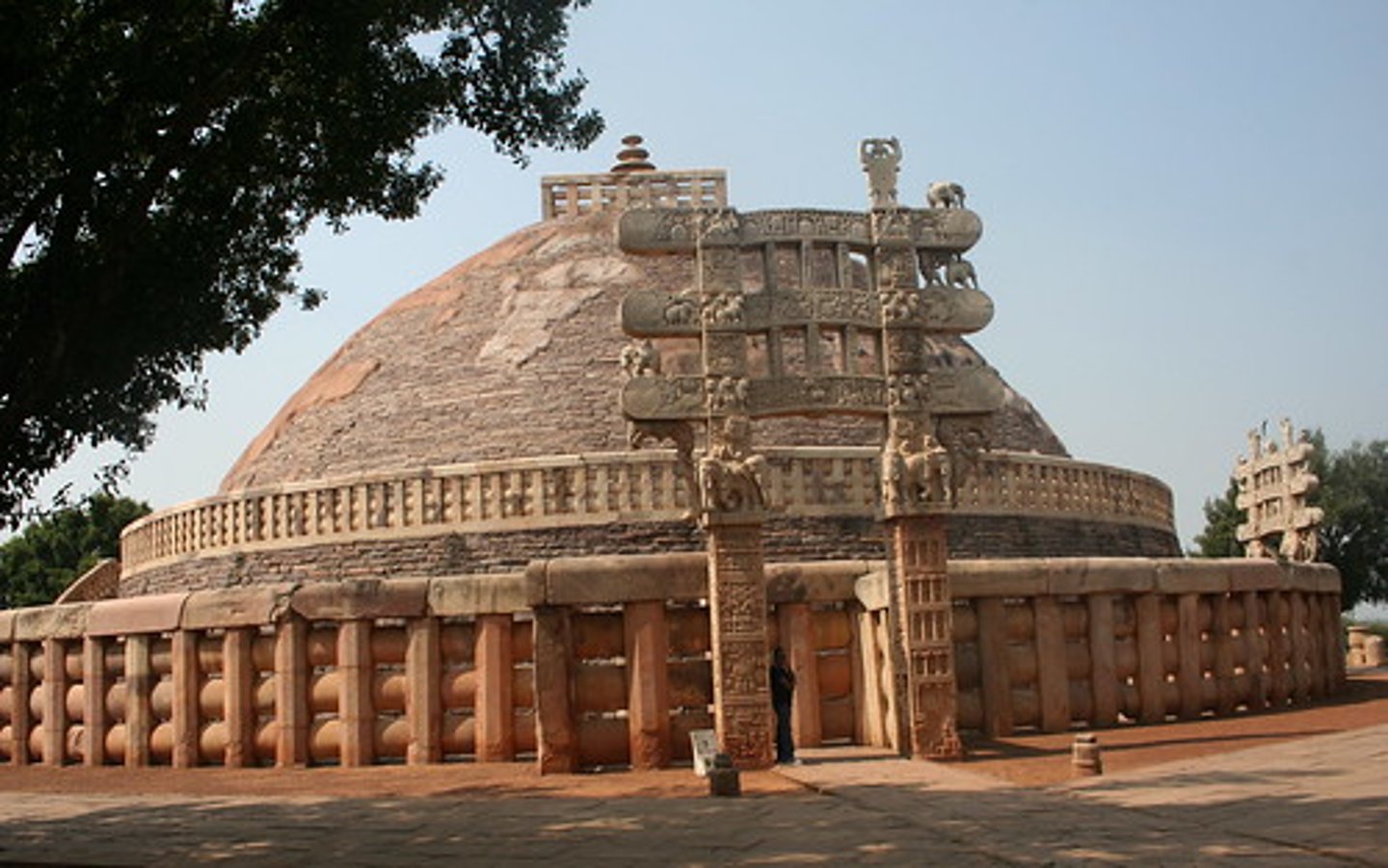
- massive Buddhist monument contains 504 life-size Buddha's 1460 narrative relief sculptures on 1300 panels 8200 feet long; there are 1500 stupas and one million carved blocks of stone
- iconographically complex and intricate; many levels of meaning; may reflect Buddhist cosmology
- circumambulation on each terrace; six concentric square terraces topped by three circular tiers w/ great stupa at summit
- pyramidal in form, aligned w/ the four cardinal points
- lower stories represent world of desire and negative impulses; middle areas represent world of forms, people have to control these negative impulses; top story world of formulas, where physical world and worldly desire are expunged
- pilgrimage
- five terraces of identical stepped square plan
- 72 openwork Buddhas, each w/ preaching mudra
- on top enclosed stupa
- rubble faced w/ carved volcanic stone
Borobudur Temple

- densely packed scene: horror vacui
- queen majestic and at rest before giving birth
- brought up to city in great ceremonial procession
- ready to give birth to her son
Queen Maya Riding a Horse Carriage Retresting to Lumbini to Give Birth to Prince Siddhartha Gautama
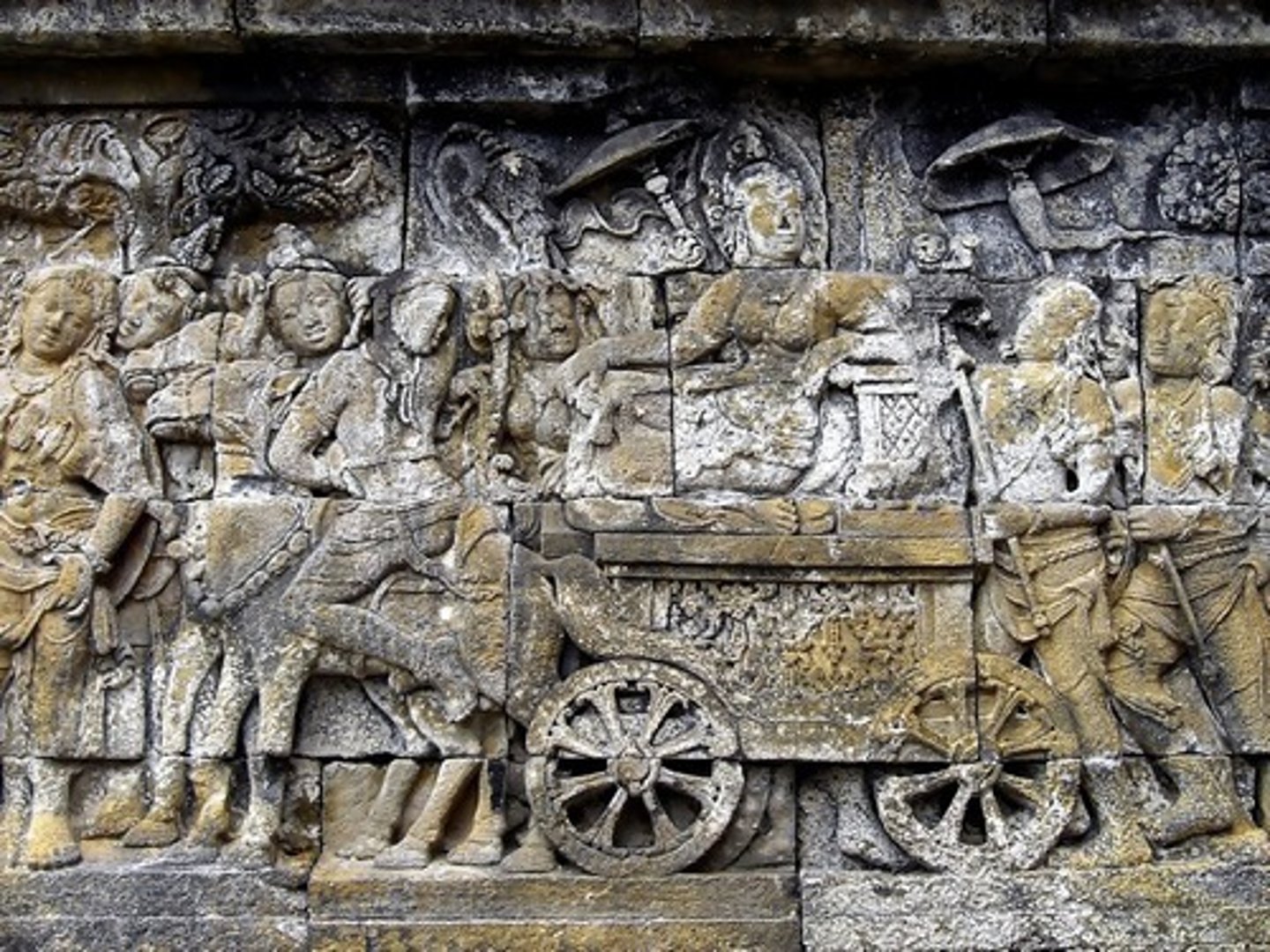
- vigorously dancing w/ one foot on a dwarf, Demon of Ignorance; often depicted in flaming nimbus
- flying locks of hair terminate in rearing cobra heads
- one hand sounds drum that he dances to, another has flame
- four hads
- epicene quality
- periodically destroys universe so it can be reborn again
- unfolds universe out of drum held in one of right hands; preserves it by uplifting other right hand in gesture indicating "do not be afraid"
- shave has third vertical eye barely suggested between two other eyes; once burned god Kama w/ this eye
Shiva as Lord of Dance (Nataraja)

- placed on high pedestal
- series of shapes that build to become large tower; complicated intertwining of similar forms
- center: "embryo" room w/ shrine, very small, only enough space for priest
- corbelled roofs w/ beehive quality
- grouped w/ series of other temples in Khajuraho
- ashlar masonry
- bands of horizontal boldings unite temple
- made of fine sandstone
- compact proportions
- sanhara: inner ambulatory
- east/west axis: receives direct rays from rising sun
- sculpture has harmonious integration w/ architecture
- figures sensuous w/ revealing clothes
- erotic poses symbolize regeneration
Lakshmana Temple
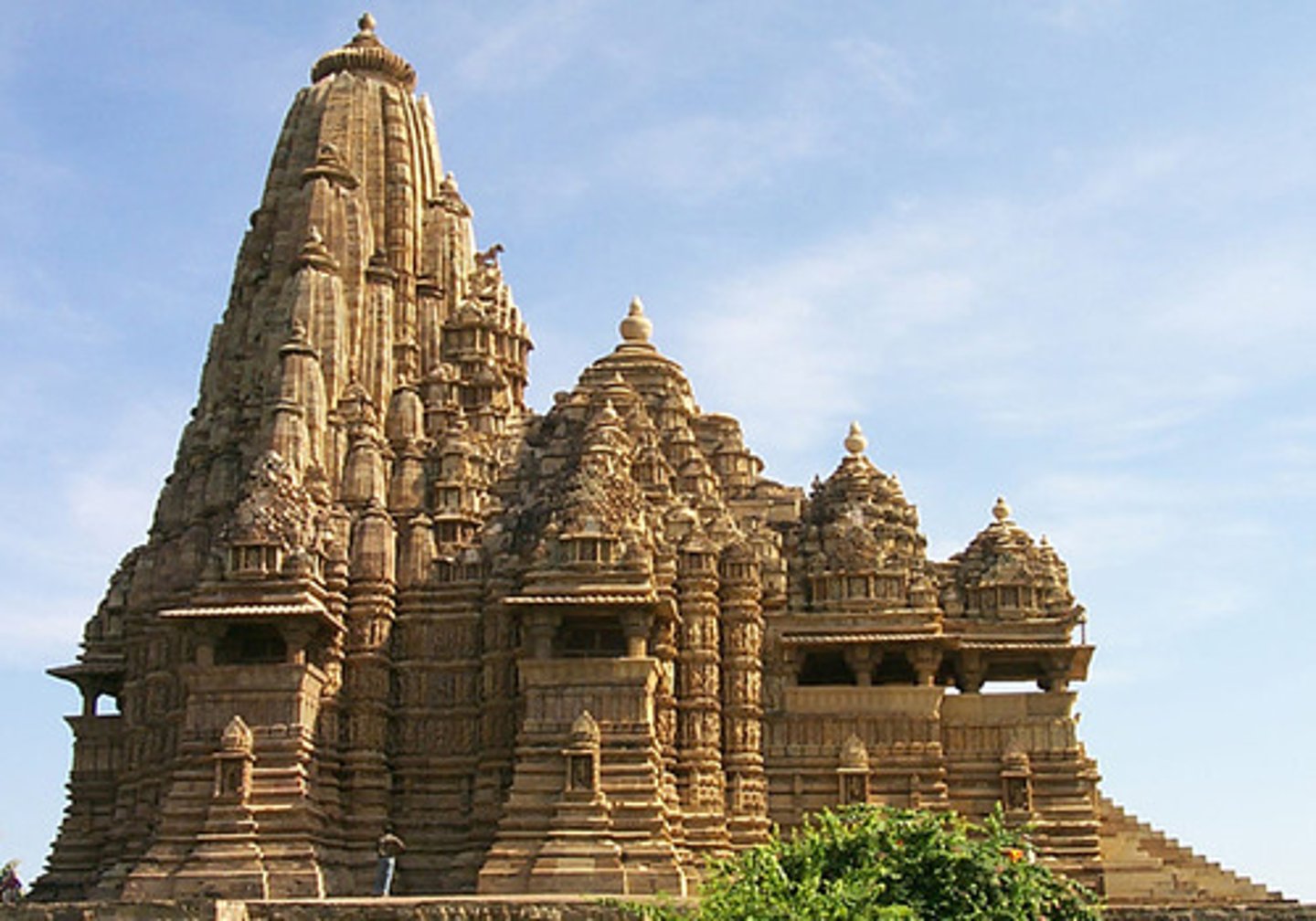
- capital of medieval cambodia built by Suryavarman II
- main pyramid surrounded by four corner towers; temple-mountain
- corbelled gallery roofs; influenced by Indian used of corbelled vaulting
- dedicated to Vishnu; most sculptures represent Vishnu's incarnations
- horror vacui of sculptural reliefs
- sculpture in rhythmic dance poses; repetition of shapes
- complex built by successive kings installing various deities in complex
- mixed Buddhist/Hindu character
- kings often identified themselves w/ gods they installed
- mountain-like towers symbolize five peaks of Mount Meru, sacred mountain said to be center of spiritual and physical universe in Buddhism and Hinduism
Angkor, the temple of Angkor Wat, and the city of Angkor Thom

- story from Hindu religion
- Churning of the Ocean of the Stars to obtain Amrita, nectar of immortal life
- both gods (devas) and devils (asuras) churn ocean to guarantee themselves immortality
- to churn ocean, used Serpent King, Vasuki
- bas-relief at Angkor War depicts devas and asuras churning Ocean of Milk
- Vishnu wraps serpent around Mount Mandara; mountain rotates around the sea and churns it
Churning of the Ocean of Milk

- most famous and powerful Khmer monarch
- heavily influenced by two wives, who were sisters; married one after the other's death
- patron of Angkor Thom
- devoted to Buddhism although monuments show mixture of Buddhism and Hindu iconography
Jayavarman VII
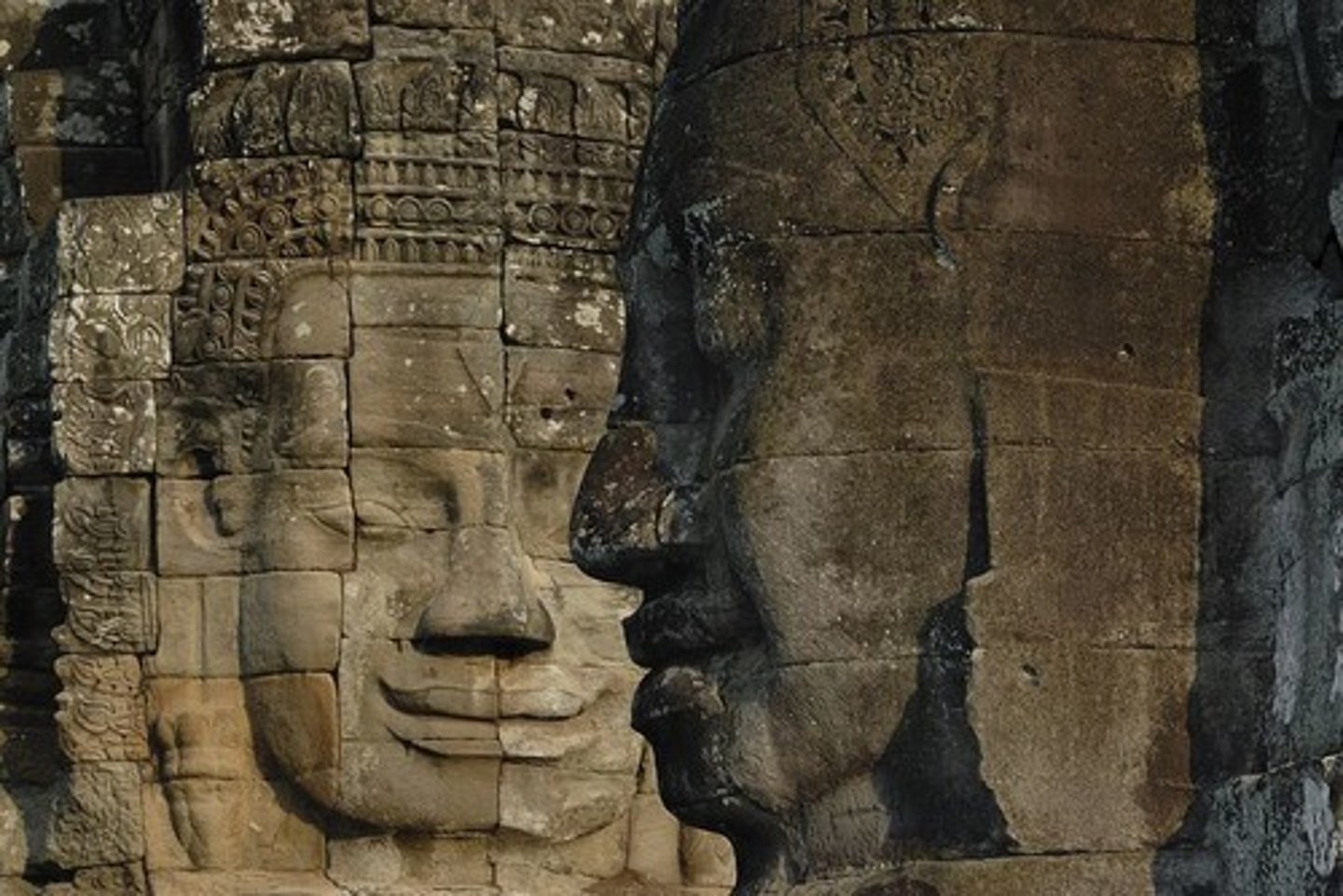
- Jahangir had many artists to follow him wherever he went; wanted everything recorded
- sought to bring together things from distant lands
- seated on hourglass throne; sands to time run out; Jahangir near the end
- surrounded by halo of sun and moon; Jahangir source of all light
- sits on Renaissance carpet; figures of small cherubs copied from European paintings
- artist in lower left corner; symbolically signs name on footstool beneath Jahangir; holds miniature w/ two horses and en elephant ---> gifts from patron?
- James I of England in lower left corner
- Ottoman sultan (not a real portrait)
- Holy Man handed book by Jahangir (or other way around?); placed above and ranks higher than all others
- quotation: "though outwardly shahs stand before him, he fixes his gazes on dervishes"
Jahangir Preferring a Sufi Shaikh to Kings
